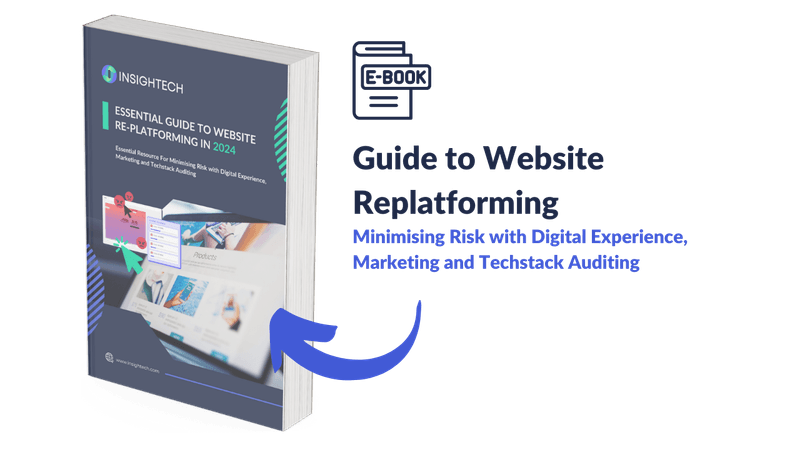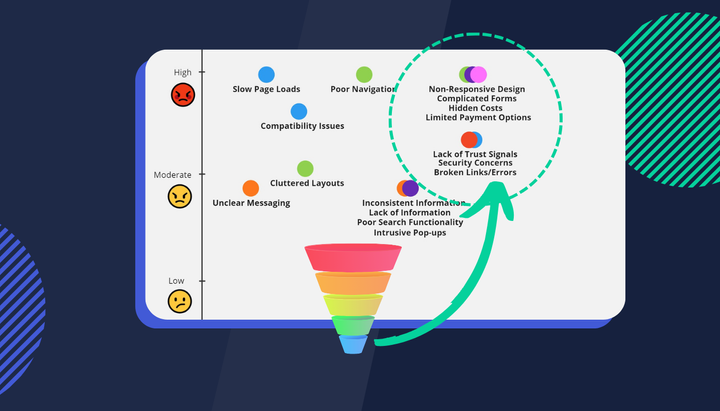7 Online Retail UX Trends To Accelerate 2024 Website Sales
From the best Shopify plugins to the latest UX best practices, this blog explores the most popular e-commerce content and design elements that are defining the digital marketplace this year.

eCommerce continues to evolve with emerging trends in content and design that are reshaping the online shopping experience. From the best Shopify plugins to the latest UX best practices, this blog explores the most popular e-commerce content and design elements that are defining the digital marketplace this year.
When researching this article we looked at this from a new angle by studying what the most popular plugins were on the Shopify store. This approach gives us a unique perspective on the most common problems online retailers want to solve and how they want to solve them. Importantly, it provided us with a way to categorise and rank these trends based on real-world popularity rather than subjective opinion.
So let's get stuck in!
1. Personalisation
- Social Proof and FOMO: Tools like Nudgify enhance customer experience by adding real-time social proof and FOMO (Fear of Missing Out) notifications, boosting conversion rates.
- Personalisation and Customisation: Plugins offering personalised product options and bundling cater to the growing demand for tailored shopping experiences.
- Efficient Search and Navigation: Advanced product filter and search solutions are crucial for improving user navigation and reducing friction on e-commerce sites.
2. Embracing Emerging Technologies
- AI and Machine Learning: Integration of AI for personalised user experiences is becoming more prevalent, with AI analyzing user data to deliver tailored content and recommendations.
- Voice User Interface (VUI): With the rise of voice assistants, designing for voice interactions is becoming increasingly important.
- Augmented Reality (AR) and Virtual Reality (VR): These technologies are being integrated into designs to create immersive and interactive shopping experiences.
Free eBook: Comprehensive guide to navigating the complex process of website re-platforming.

- Identifying Limitations of the Current Platform
- Aligning Re-platforming Goals with Business Strategy
- Conducting a Comprehensive UX, Marketing and Tech Audit
- Questions to consider when analysing your site’s digital experience
3. Focus on Accessibility and Inclusivity
- Design for All: Ensuring designs are accessible to people with disabilities, including considerations for colour and contrast, screen reader compatibility, and easy navigation.
- Cultural Sensitivity: Being mindful of cultural nuances in designs, and coloursrespecting cultural contexts and norms.
4. Minimalism and Clarity
- Simplicity in Design: A shift towards (or perhaps a continuation of this trend) minimalistic layouts that prioritise content clarity and ease of navigation.
- Bold Typography: The use of exciting and vibrant colours and bold typography to create engaging and memorable experiences.
5. Mobile-First and Cross-Platform Consistency
- Responsive Design: Ensuring designs work seamlessly across all devices, with a particular focus on mobile-first design.
- Consistent Experience Across Platforms: Users should have a consistent experience regardless of the platform they use.
6. Enhanced Interactivity
- Micro-Interactions: Subtle animations and micro-interactions for feedback and user engagement.
- Gamification: Incorporating elements of gamification to make interactions more engaging and enjoyable.
7. Continuous Learning and Adaptation
- Stay Updated: Keeping informed about the latest trends, tools, and methodologies in UX/UI design.
- Feedback and Iteration: Regularly seeking user feedback and being willing to iterate on designs.
The e-commerce landscape in 2024 is marked by a blend of technological advancements, a focus on user-centric design, and a commitment to inclusivity and sustainability. By embracing these popular content and design elements, e-commerce platforms can offer experiences that are not only functional but also engaging, accessible, and memorable.
Understanding user interaction is key, and Insightech's click map and scrolling heatmap features are at the forefront of this analysis. The click map functionality reveals what elements users are clicking on, providing clear insights into which aspects of your page are attracting the most engagement.
Meanwhile, the scrolling heatmap offers a visual representation of how far down users are scrolling, indicating what content is being seen and which areas might be overlooked. These tools are essential for identifying which features and content elements are integral to the ideal customer journey on your website.
For a deeper dive into how these insights can be translated into tangible improvements and to understand the monetary value of these UX design elements, reach out for a demo from Insightech. We'll guide you through the process of refining and optimising your website in 2024, using data-driven strategies to enhance user experience and conversion rates.



